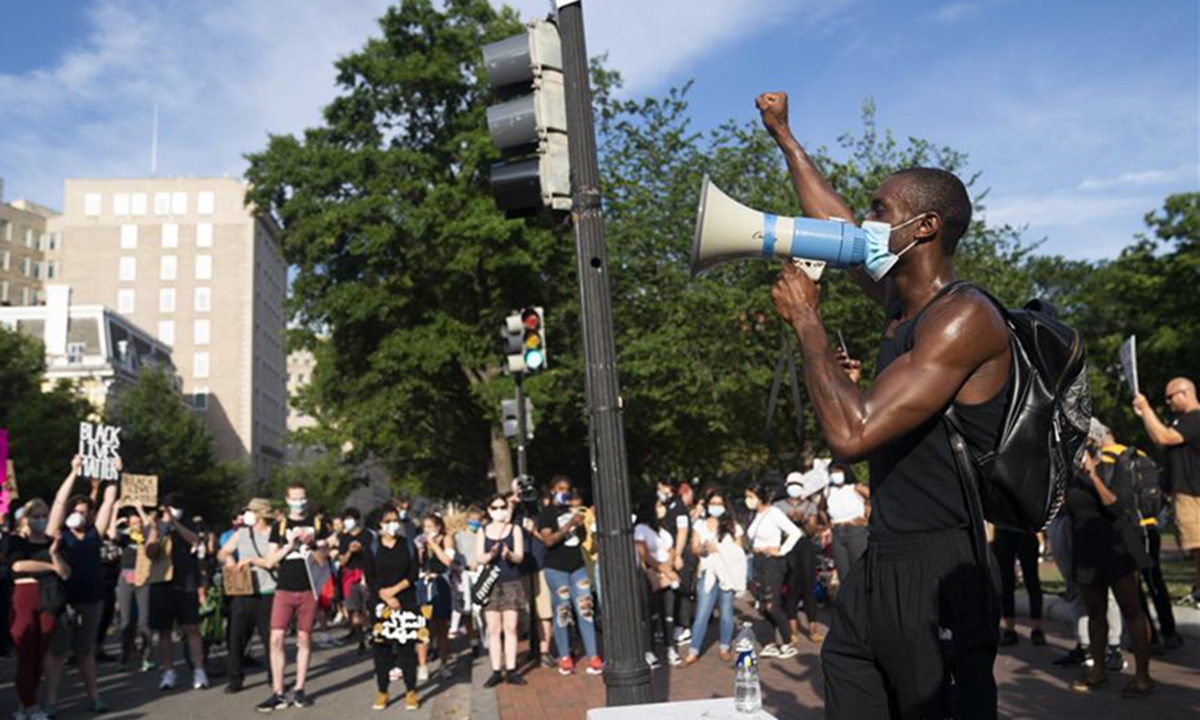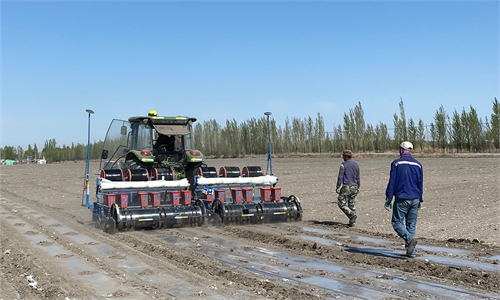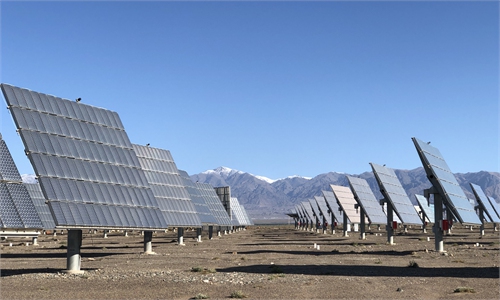
Demonstrators protest against racial injustice to mark Juneteenth, commemorating the end of slavery in the United States, near the White House in Washington, D.C., the US, June 19, 2020. Photo:Xinhua
Ron Wyden, chairman of US Senate Finance Committee and a Democrat from Oregon, recently raised a seafood provision as an amendment to the proposed US Innovation and Competition Act. It requires US authorities to issue stricter regulations on seafood imports from China and over 20 other countries. According to a joint report from the US Commerce and State Departments last year, China was "a significant offender in the use of forced labor in their fishing sector," Politico reported.
Some Western media outlets have been hyping the issues of Xinjiang cotton, claiming they are produced by "forced labor." As a matter of fact, the West's "concern" over Chinese labor has never ceased since reform and opening-up. They have smeared China as "a hub for sweatshops." Lately, they are again playing up the issue of "human rights" and "labor standards." This is not only a means to set up new trade barriers against China, but also an excuse to promote the recently passed Endless Frontier Act, which is also aimed at China.
There is a strict definition of "forced labor" internationally. For example, according to the Forced Labour Convention, issued by the International Labour Organisation in 1930, "the term forced or compulsory labour shall mean all work or service which is exacted from any person under the menace of any penalty and for which the said person has not offered himself voluntarily." In 1957, the International Labour Organisation issued the Abolition of Forced Labour Convention. China also has laws and regulations against forced labor.
Objectively speaking, China has taken firm and effective measures to protect the rights and interests of workers and to crack down on forced labor violations. Over the past 40 years of reform and opening-up, China has made world-renowned achievements in the protection of labor rights, including realizing the continuous rise of labor wages and the gradual improvement of the social security system.
These achievements have not only benefited the working people, but also won widespread praise from the international community.
In September 2020, the US Customs and Border Protection Bureau announced a ban on imports from five Chinese companies from Xinjiang Uygur Autonomous Region and a manufacturer over "forced labor." Following this, US Special Presidential Envoy for Climate John Kerry commented at the House Foreign Affairs Committee hearing that solar panel and other components in renewable energy produced in Xinjiang would be targeted as its new trade sanctions against China. It is worth noting that China is not the only country to be included in the seafood provision. This yet is another example of the US acting as an "international policeman" in the field of labor.
In fact, the US is a "role model" for exploiting forced labor. The US has a long history of selling black slaves. According to statistics, the labor value of black slaves exploited by US slave owners is equivalent to as much as $14 trillion in current prices. Even up to now, forced labor is still deep-seated in the US, with a mere shift of victims from black slaves to immigrants. According to relevant statistics, in the past five years, all 50 states and Washington D.C. reported cases of forced labor and human trafficking. In 2019 alone, the FBI reported 1,883 cases of human trafficking, over 500 more than 2018.
Up to 100,000 people have been trafficked into the US for forced labor annually. Half of them are sold to sweatshops or enslaved in households. The problem of forced labor is particularly prominent in more than 20 industries, including domestic services, agriculture, planting, tourism, catering, medical care and beauty.
Recently, it was revealed by some media that hundreds of Indian workers have been forced to work in the US, which once again put the protection of labor rights in the US into the forefront of international outrage. It is reported that those Indian workers are compelled to work more than 87 hours per week, receiving only US$1.2 per hour. This is far less than the minimum salary stipulated in federal and state laws and regulations.
The US has a notorious record of not protecting labor rights and fair work. According to relevant reports of international labor organizations, systematic violation of labor rights exists in the US, a country with the worst performance among major developed countries.
The author is a professor of the Academy of China Open Economy Studies, University of International Business and Economics. opinion@globaltimes.com.cn



